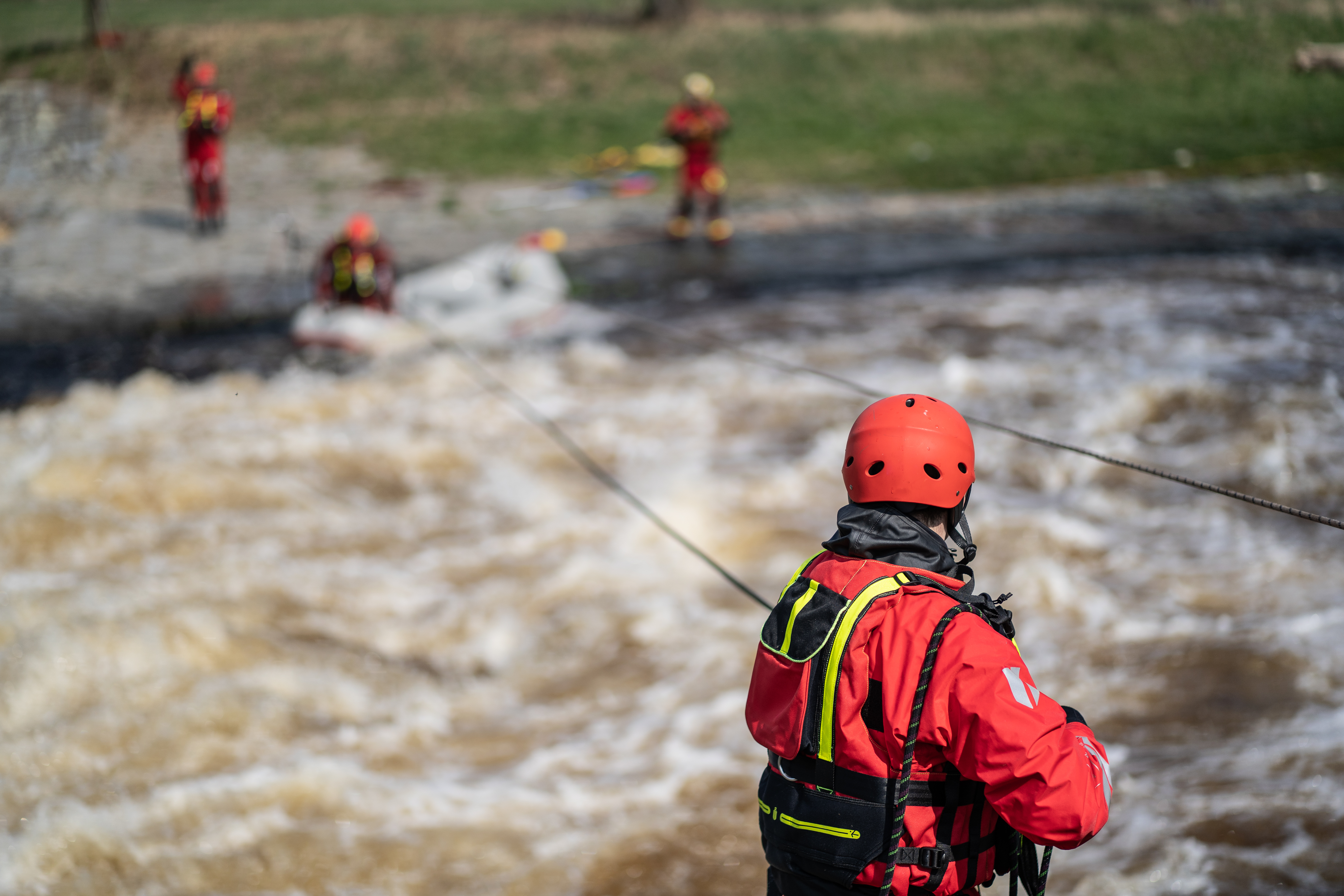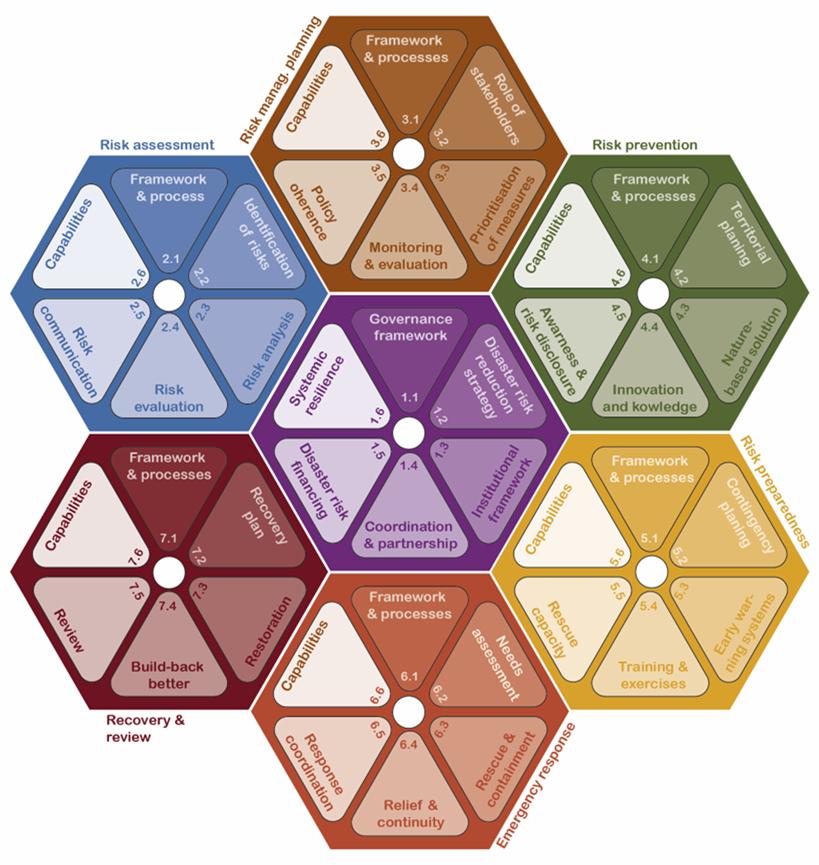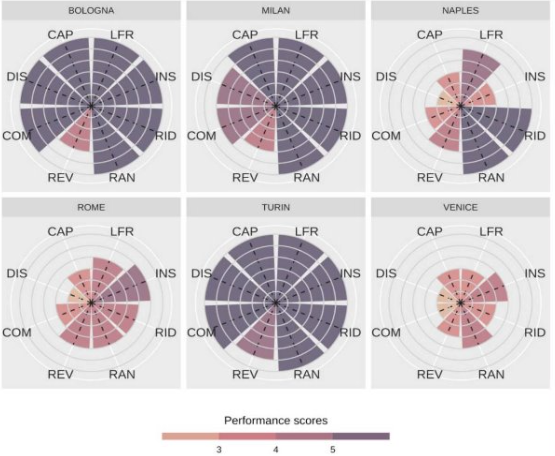Risk management capabilities
Climate risk assessment forms the foundation for effective risk management and is a critical step in the risk management cycle and framework. It identifies and quantifies potential climate threats, providing data-driven insights to support decision-making. However, successful risk management depends on the ability of policies and systems to respond to and mitigate these identified risks. A detailed climate risk assessment may not translate into effective action if a city or local authority lacks the necessary skills. As a process, risk management involves stakeholder consultations, institutional collaboration, communication, and capacity building. Risk management capability is generally defined as the ability to reduce, adapt to, or mitigate risks—both the impact and likelihood of disasters—identified in risk assessments, ensuring they remain at acceptable levels. It is evaluated based on technical, financial, and administrative capacity to conduct comprehensive risk assessments, develop risk management plans for prevention and preparedness, and implement risk reduction measures. Public authorities involved in risk management should regularly reflect on and assess their readiness to cope with natural hazards and human-induced disasters.

Assessment of Risk Management Capabilities
A structured framework for assessing risk management capabilities was developed under the Union Civil Protection Mechanism as part of a Peer Review Program for countries. However, this framework is adaptable to various scales, including regional and local contexts. The Assessment of Risk Management Capabilities tool helps authorities evaluate their current status in adaptation and disaster risk reduction while identifying major gaps and opportunities for improvement. This assessment is structured around seven key areas of analysis:
1. Disaster Risk Reduction governance
2. Risk Assessment
3. Risk Management Planning
4. Risk Prevention measures
5. Risk preparedness measures
6. Emergency response
7. Recovery and lesson learned

Climate Risk Assessment at the City Level
Hover over each flip card to learn more
Framework and process
Identification of risks
Risk analysis
Risk evaluation
Risk communication
Capabilities
Self-Evaluation Criteria for Cities
Municipalities can adopt a self-evaluation method to effectively assess, track and improve their own strategies and capabilities. This approach is also adaptable to various urban contexts and allows for comparability with other cities. The following evaluation criteria are considered and measured:
1. Integrated Institutional Collaboration: Establish a comprehensive inter-institutional framework that ensures active participation from all stakeholders, fostering a collaborative approach to climate governance.
2. Stakeholder Engagement: Encourage robust stakeholder engagement to facilitate inclusive decision-making and harness diverse insights for more effective climate action.
3. Hazard Identification: Systematically identify the primary climate hazards specific to regions or sectors to tailor responses and preparedness measures effectively.
4. Methodology for Climate Risk Analysis: Develop and standardize a clear, replicable methodology for assessing climate risks that can be adapted to various contexts and scales.
5. Risk Assessment and prioritization: Implement a thorough risk evaluation process to prioritize interventions, directing resources and efforts to areas of highest impact and vulnerability.
6. Public Information and Communication: Craft and execute a strategic plan for informing and communicating with the public about climate risks, resilience strategies, and emergency preparedness.
7. Dissemination of Findings: Ensure that the results of climate risk analyses and the effectiveness of interventions are widely disseminated, fostering transparency and knowledge sharing.
8. Capacity Building: Strengthen administrative, technical, and financial capacities to support the implementation of climate resilience measures, ensuring that institutions have the requisite skills and resources.
Case Study – Milan’s Climate Risk Assessment
The framework was applied in Milan to investigate the local cross-sectoral processes of processes of identifying, analysing and evaluating the risk of the most relevant climate-related hazards insisting on the municipal territory, as well as to identify if and how this process is mainstreamed in existing disaster risk reduction and climate adaptation strategies and plans. Additionally, the tool was tested by CMCC in other Italian cities.

Summary
Reflection
1. How can risk management capabilities be assessed?
2. What are the main areas that cities and local authorities should monitor to improve their risk management capabilities?
3. How can the Assessment of Risk Management Capabilities tool be used by cities and local authorities?




